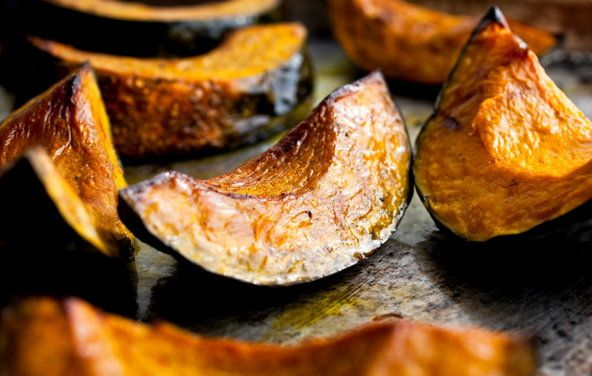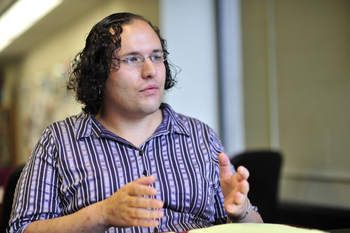Cross posted from The Stars Hollow Gazette
You know you’re in trouble when The Weather Channel‘s Jim Cantore shows up in your neighborhood and stays for over a week. You’re in trouble when, nearly two weeks after the storm, you have international aid organizations start setting up medical clinics and groups like Occupy Sandy, an off shoot of Occupy Wall St., are more effective in helping in the worst stricken areas of the NYC than the mayor’s Office of Emergency Management, FEMA and the Red Cross. Thousands of people are still without power and heat. In many cases, they are trapped in highrise city housing projects with no water to even flush toilets, no where else to go and no sign of relief.
This is the first time that Doctor’s Without Borders has set up operations in the United States:
MSF And A “Global Disaster Zone” In The Rockaways
A block in from what remained of the beach and its shattered boardwalk, in a community meeting room on the ground floor of the darkened Ocean Village apartment towers, the international humanitarian-aid group Doctors Without Borders had set up an emergency clinic with a volunteer staff of a dozen or so doctors, nurses, and assorted health professionals. A folding table was piled high with medical supplies, and a sheet strung up in a corner created a makeshift private screening area. An empty Starbucks jug doubled as an ad hoc sharps disposal container. Misha Friedman, a Moldovan photographer in his thirties with a shaved head-a veteran of Doctors Without Borders missions from Sudan to Uzbekistan-was briefing a pair of volunteers about the dire health situation faced by 800 senior residents in a nearby housing complex who had had no running water or electricity for a week.
“No one’s been evacuated,” he told me. “There is no evacuation. Doctors have been flooded out, pharmacies have been closed. Some patients are on dozens of medications, and they kind of fall off the grid.”
All across Far Rockaway, high up in the darkened towers and out in the flooded houses, scores of sick and elderly people, cut off from access to their doctors and medical care, needed help. When the clinic door opened at 10 a.m., there was already a group of patients waiting. [..]
Prior to MSF’s arrival, much of the relief work was done by a highly organized group that had arrived on the scene earlier than most: Occupy Sandy. A new iteration of the lower Manhattan based anti-one-percent group, Occupy Sandy was incredibly fast and organized in its response, bringing food and supplies to hard-hit areas like New Dorp, Staten Island, and Red Hook, Brooklyn, as the official response only began. And it wasn’t slowing down; a week into the crisis, Occupy Sandy’s massive Rockaways relief effort looked like a DIY version of the Normandy landings. Its early reports of the dire medical need in Far Rockaway had helped stir Doctors Without Borders to action. The list of patients (Dr. Maureen) Suter was working from had been compiled by Occupy volunteers, who had canvassed the desolate blocks of the neighborhood and the darkened halls of housing projects, knocking on doors and assembling names of people with medical needs. Now Suter was taking that list to make some house calls. [..]
A disaster like Sandy reveals fractures in our public-health system. It pulls back the curtain on stark inequities and structural flaws, but long-term institution building is not MSF’s mission. It wants to get to an emergency quickly, and with a minimum of red tape, to fill the gaps in treatment while gargantuan institutions are just getting going. To foster that capability, Delaunay would like to see a sort of disaster waiver established that allows experienced organizations like MSF to do their work quickly and without fear of liability. As Delaunay put it, “We aim to have a very quick response, and a very brief presence.”
So MSF will not be staying long in the Rockaways. At a certain point, very soon, it will hand off the work it has done there to the larger governmental agencies responsible for maintaining public-health infrastructure. Delaunay was impressed by the size and scale of New York’s emergency system, their ability to get water and blankets to people. But as was shown by Sandy, a system so vast can be completely overwhelmed or overlook crucial deficiencies. “The continuum of care was not anticipated,” she says, and the city needs to rethink how to take care of its most vulnerable citizens during a large-scale and complex disaster.
Another MSF volunteer physician related what she encountered in one city highrise in the Rockaways:
DIRE SITUATION, 15 FLOORS UP
The situation in the Rockaways is dire: high-rises don’t have working elevators, street lights are dark and until a day or two ago, pharmacies had either been destroyed or were shuttered. The almost complete absence of police, coupled with the constant darkness, has left residents fearful of leaving their apartments.[..]
In one squalid building on the ocean’s edge that has been without power and heat for 11 days, the stairwell reeked of vomit and urine. And yet a steady stream or residents made the trek, some joking that at least they were getting exercise.
One case was especially concerning to the doctors was a couple living on the 15th floor. Victor Ocasio, 46, has chronic bronchitis, asthma and has been throwing up blood. His wife Lorraine Bryant, 42, is diabetic and obese and uses a walker. Both have been complaining of chest pains and wooziness.
“I’m scared to walk down those steps. I fell before and I’m scared I’ll fall again,” said Bryant. But she was resisting the idea of going to a shelter, where the doctors said she and her husband could get regular medical treatment.
“I’m scared to go into a shelter. Bad things happen there,” she said.
John Josey, 72, who has been bed bound since having a stroke some years ago, suffers from diabetes, high blood pressure and arthritis.
A home health aide who tends to him said the pharmacy where she normally fills his prescriptions washed away in the storm, and a family member had asked that a Doctors Without Borders volunteer visit to fill out new prescriptions.
This op-ed in The New York Times by Joe Nocera was a chilling indictment of the indifference of Mayor Michael Bloomberg and FEMA to the plight of the people in the hardest hit areas:
We drove farther east to Far Rockaway, a much poorer area. There were long lines at various churches that were serving as distribution centers. Although there were police officers everywhere, the hard work of getting Far Rockaway residents help had, once again, fallen to volunteers.
At the Church of the Nazarene in Far Rockaway, however, I did see a FEMA presence; I was told that FEMA had arrived on Thursday. You would think that FEMA, with all its expertise, would be coordinating the relief effort. But you would be wrong. When I asked one FEMA official what his workers were doing, he said they were mainly trying to make sure that residents applied for assistance. That is not insignificant, of course, but it’s not exactly leading the charge. [..]
When I called Mayor Michael Bloomberg’s office to ask why so much of the relief effort had been left to volunteers, I got immense pushback. Cas Holloway, one of Bloomberg’s deputy mayors, told me that the city had handed out two million meals. The city was coordinating with the Salvation Army, he said, and was a big presence in the Rockaways. It had set up five distribution centers there. It was paying food trucks to give out free food.
Be that as it may, I can tell you that that is not the experience of many volunteers – or residents – of the Rockaways. Before the storm hit, Mayor Bloomberg said that New York City didn’t need FEMA’s help because the city had “everything under control.” You don’t have to spend much time in Queens to realize that New York City needs all the help it can get. It is extremely fortunate that it is getting so much help from volunteers.
Before we left the Rockaways, (Nan) Shipley and I met a man who had come into (city councilman, James) Sanders’s office looking for help. He had two children, he said, including a 2-month-old baby who had had bronchitis and had just gotten out of the hospital. “Our house is too cold,” he kept saying, wiping tears from his eyes. “The baby will get sick again. We need a place to stay.”
After talking to the man, Shipley walked back to the Church of the Nazarene to see if one of the FEMA officials could do something.
A few minutes later, she came back frowning. “He said to call 911,” she said.
Here is how you can help.
Occupy Sandy is a coordinated relief effort to help distribute resources & volunteers to help neighborhoods and people affected by Hurricane Sandy. We are a coalition of people & organizations who are dedicated to implementing aid and establishing hubs for neighborhood resource distribution. Members of this coalition are from Occupy Wall Street, 350.org, recovers.org, InterOccupy.net and many individual volunteers.
Donate to Occupy Sandy in New York
Amount raised as of Nov. 10th: $378,610.00Donate to Occupy Sandy in New Jersey
Amount raised as of Nov. 10th: $50.00Occupy Sandy believes in mutual aid and the community that is formed through in-kind donations. In order to recognize that there is more than one form of capital, the money in this account will be invested in long-term disaster relief rebuilding projects and emergencies. All other needs will be filled through in-kind donations. The task of rebuilding communities is a marathon and not a sprint. We thank you for your donations and your support.
Current Needs – blankets (we have none) flashlights aaa batteries gallon ziplock bags cleaning hardware, especially brooms, flat shovels, mops masks and gloves hydrogen peroxide white vinegar any sort of baby/toddler food and formula duct and scotch tape tolitries (deoderents, tampons, soap, etc) can openers.
(WE NO LONGER NEED ANY GENERAL CLOTHING SUPPLIES)
Victims of Hurricane Sandy across the northeast need help immediately. Temperatures are plummeting and a Nor’easter is bearing down the coast.
Firedoglake’s Occupy Supply has many of the supplies these disaster victimes need, and we’re working with organizers at Occupy Sandy to get 1000 woobie, fleece and space blankets in the hands of those affected by the storm.
Can you chip in $20 to ship these blankets and get them to New York, so they can be distributed immediately?
100% of your contribution to Occupy Supply will be used to purchase and ship blankets and other essential supplies to victims of Hurricane Sandy. All items are American-made.
Doctors Without Borders is not accepting any more donations for the Hurricane Sandy Disaster Relief. It has received more than enough to cover its operations in New York City Boroughs of Queens, Staten Island, Brooklyn, and Hoboken, New Jersey.


 SS Edmund Fitzgerald (nicknamed “Mighty Fitz,” “The Fitz,” or “The Big Fitz”) was an American Great Lakes freighter launched on June 8, 1958. At the time of its launching, it was one of the first boats to be at or near maximum “St Lawrence Seaway Size” which was 730 feet (220 m) long and 75 feet (23 m) wide. From its launching in 1958 until 1971 the Fitzgerald continued to be one of the largest boats on the Great Lakes.
SS Edmund Fitzgerald (nicknamed “Mighty Fitz,” “The Fitz,” or “The Big Fitz”) was an American Great Lakes freighter launched on June 8, 1958. At the time of its launching, it was one of the first boats to be at or near maximum “St Lawrence Seaway Size” which was 730 feet (220 m) long and 75 feet (23 m) wide. From its launching in 1958 until 1971 the Fitzgerald continued to be one of the largest boats on the Great Lakes.
 Welcome to the
Welcome to the 
 Nashua, New Hamphire voters
Nashua, New Hamphire voters 